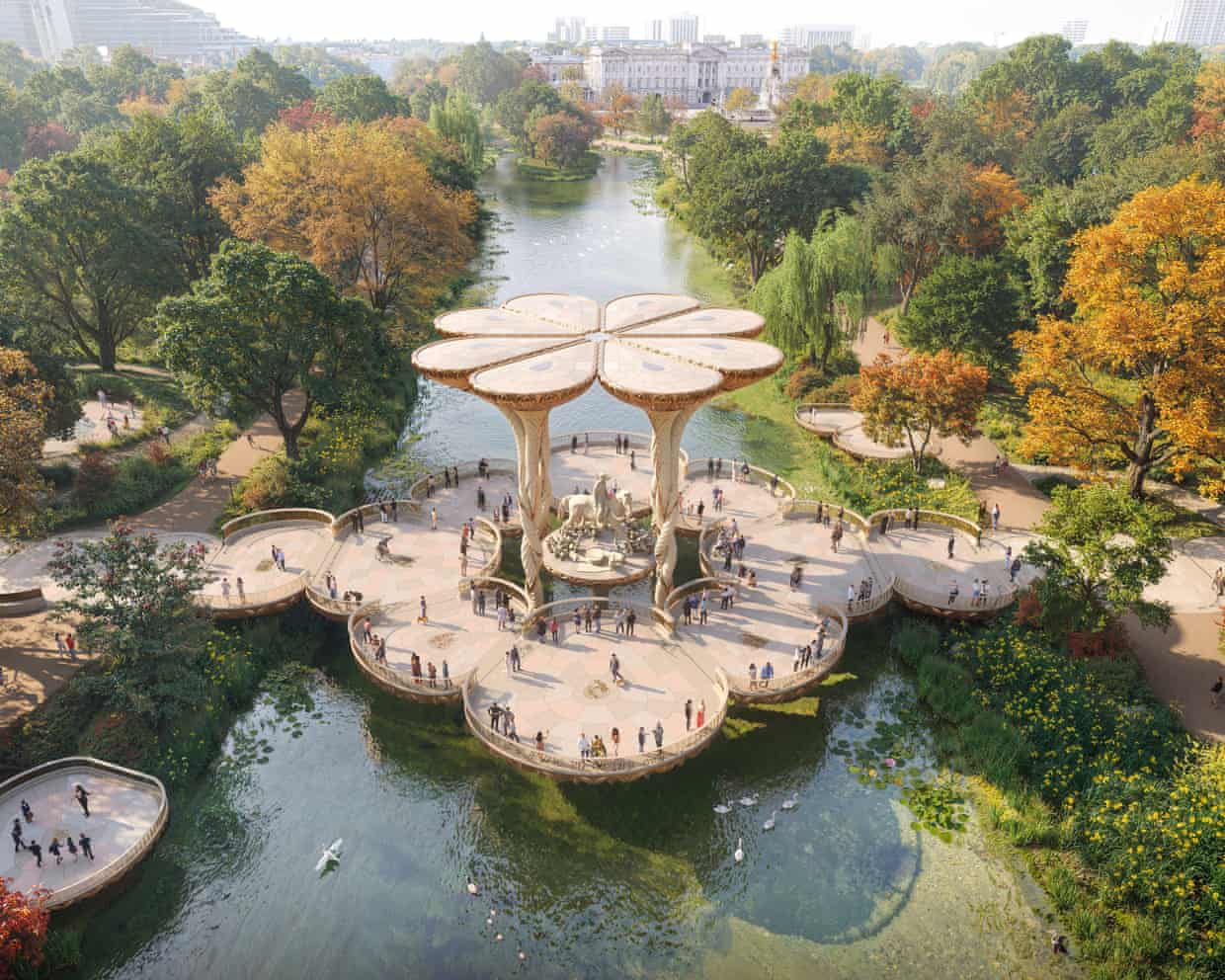The challenge of encapsulating the lasting spirit of Queen Elizabeth II lies at the heart of the innovative memorial designs that have been shortlisted to honor Britain’s longest-reigning monarch.
Among these designs under consideration, there is a precise replica of a Windsor oak tree, a monumental canopy made of stone lilies, and a “graceful yet robust” stone bridge that signifies her role as a foundational pillar of the nation. Public consultation is currently underway regarding these proposals.
Additional concepts include a statue of the late queen alongside Prince Philip, an audio installation featuring her voice, and a serene collection of romantic royal gardens inspired by the Georgian architect John Nash.
The memorial is set to be located in St James’s Park, adjacent to Buckingham Palace in central London. An online consultation, facilitated by Malcolm Reading Consultants, invites public input on the shortlisted designs and will be open until May 19. At this stage, images of the memorials are available for reference, with a sculptor to be appointed subsequently.
Three of the proposed designs depict the late monarch on horseback, reflecting her passion for equestrian activities.
The five shortlisted concepts are as follows:
1. A “serene family” of royal gardens interconnected by a natural stone pathway, designed by Norman Foster from Foster + Partners in collaboration with artist Yinka Shonibare, ecologist Prof Nigel Dunnett, and landscape architect Michel Desvigne. This plan features a statue of the queen with Philip, a reflective wind sculpture, audio installations of the queen’s voice, a digital conservatory, and a bridge symbolizing unity.
2. A memorial walkway themed around “togetherness,” incorporating 70 lily pad stepping stones, developed by Heatherwick Studio with sculptor and ceramicist Halima Cassell, MRG Studio, Webb Yates, and Arup. The centerpiece is a limestone sculpture of the late queen, sheltered by a large canopy of eight sculptural lilies.
3. A stone bridge spanning soil, roots, and water, designed to represent Elizabeth as the “foundation of the nation,” created by J&L Gibbons in collaboration with production designer Michael Levine and William Matthews Associates. This design features glades conducive to “forest bathing” within the city.
4. An accurate cast of an oak from Windsor Great Park, symbolizing resilience and the monarchy, conceived by Tom Stuart-Smith along with Jamie Fobert Architects and artist Adam Lowe of Factum Arte. The memorial path will include bronze casts of significant objects from the queen’s life and a “sonic soundscape” of recollections.
5. A network of pathways throughout the park complemented by a pair of “elegant bridges” proposed by WilkinsonEyre, alongside artists Lisa Vandy and Fiona Clarke.
Lord Janvrin, the queen’s former private secretary and chair of the Queen Elizabeth memorial committee, emphasized the need for the designs to “embody the essence” of the late monarch’s legacy for future generations. He stated that it is “only appropriate” for the public to share their insights.
A committee panel will choose the final design, which is expected to be revealed in 2026, before seeking approval from King Charles and the Prime Minister.

